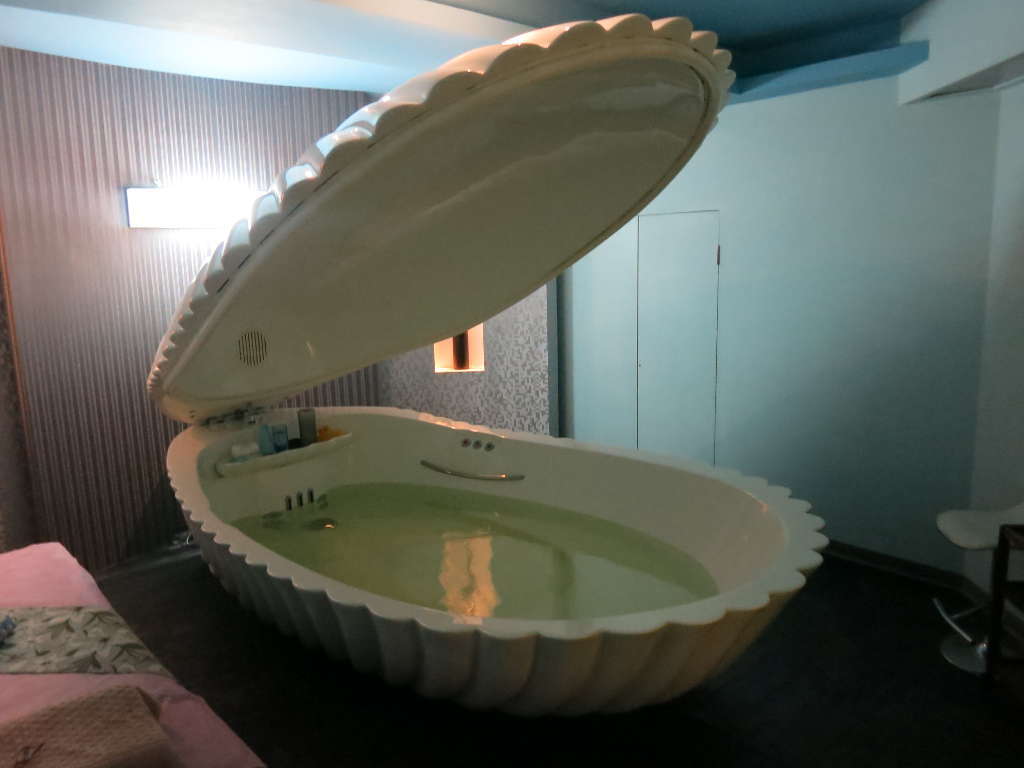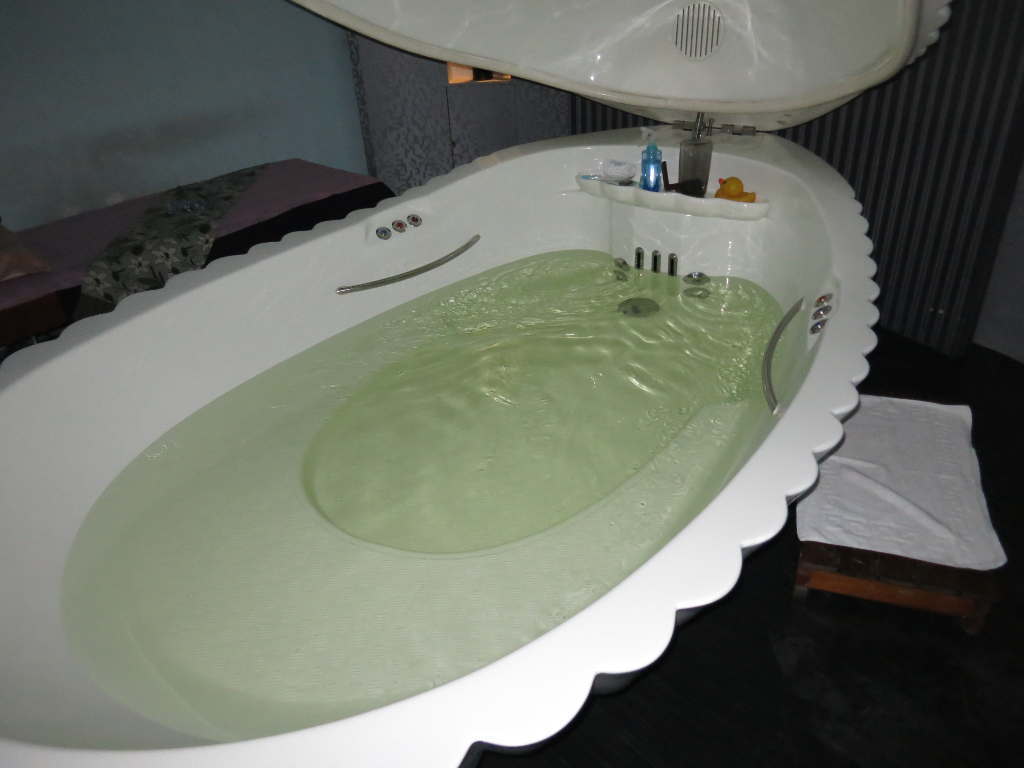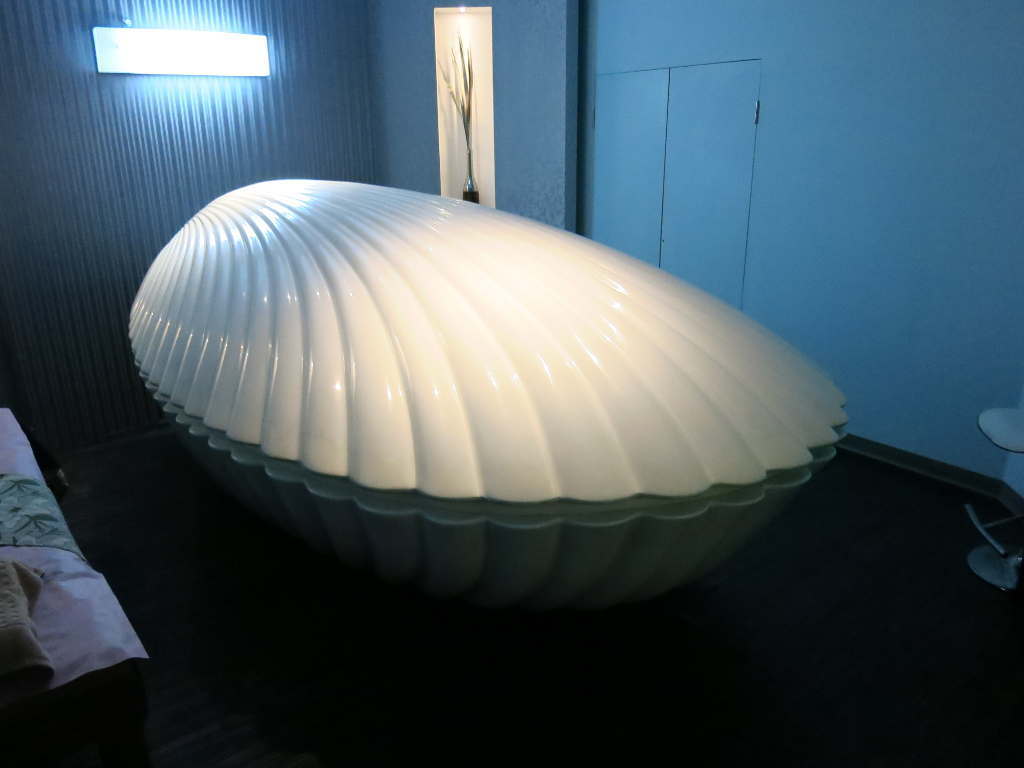Recently, during an extended stay in Taiwan, I started with floating sessions.

Every other week, I float for about 70 minutes in a tub filled with magnesium-sulfate-saturated water, a so-called flotation tank, also known as an isolation tank.
The water is kept at skin temperature, and the tank is supposed to be sound and light proof. Upon closing the door or lid, it is pitch dark, and you hear almost nothing. Float therapy was originally devised to answer the question “what happens to the brain in the absence of sensory stimulation?”
In the meantime, it has become a popular tool to reduce stress, solve creative problems, help with insomnia, and improve performance, among others.
So far, I have done two sessions, with more coming up.
I have found that floating can be very relaxing and uplifting. With this post, I would like to inspire you to try it yourself.
How to prepare for floating?
Before my first floating session, I read a bit on how to prepare. Based on my reading, I followed these key points:
- I ate a normal lunch about 3 hours before my float session. You don’t want to be too full but also not too hungry.
- I finished lunch with a cup of coffee. Usually, you are advised not to drink coffee before floating as it can interfere with your ability to relax. Before my first float, I had been slightly sleep deprived, so I decided I didn’t want to skip my coffee.
- I did shave in the morning, about 7 hours before my session. This proved to be just about right. I still felt a slight stinging (the water is full of salt), but only in the first couple of minutes. I also covered a scratch on my arm with liquid bandage. I am sure that scratch would have burned in the salty water otherwise.
- I tried not to expect anything in particular. I made relaxing my only task.
My first two floating experiences
First float
I scheduled my first float for 3 pm in the afternoon. I thought a morning session might be better, but I had to travel for about 2 hours to get to the float center.
I had seen the flotation tank the spa used on the Internet, but it in real life it was a lot larger than I had expected. The room looked friendly and inviting. It wasn’t really tank like, but a large shell with an electric-motor-powered lid. You can float with or without music and also switch on a starry sky. I decided on no music and no stars.

Floating is very easy: I just laid on my back in the water, placed my arms close to my body and slightly spread my legs. I arranged my position by holding on to the handrails on the left and right side of the tank.
Then I just pressed the remote control to close the lid of the tank and laid back.
I am quite tall (1.90 m / 6 ft 2), but surprisingly the tank was large enough for me to float without touching any wall.
The lid closed, but it wasn’t completely dark. A little bit of light came shining through, so I closed my eyes. Staff later told me that you can also turn off all the light in the room, which I decided to do for the next session.
It wasn’t completely quiet either. I could still hear a water pump or filtration system, but that didn’t bother me.
I did, after a short while feel almost weightless. This was very different from lying on my bed or in a bath tub. I also stopped noticing the water around me pretty fast. It really was kept at skin temperature.
The shell proved to be sleep-inducing: After about 10 minutes, I fell asleep and slept for maybe 30 minutes. This would be great to have at home for a nap or even an overnight sleep.

The remainder of the session, I just meditated and relaxed. A soft voice alerted me that my session was coming to an end. A float session in this spa is 70 minutes. I think this is a good duration to start with.
“Very relaxing,” that pretty much sums up my first experience.
And there was a nice afterglow: I felt completely relaxed for the remainder of the day. I had no worries, and even thoughts that would normally agitate me didn’t bother me at all. I tried to agitate myself on purpose, but it didn’t work!
The following night, I slept for about 9 hours, which is longer than I had slept in months.
Two weeks later, I went for my second float
This time, I had scheduled a session for 11 in the morning. I ate about three hours before the session and abstained from coffee. I also had all lights switched off in the window-less room, so it was completely dark.
Unlike the first time, I wasn’t able to completely relax for quite a long time and didn’t fall asleep either. There was nothing that bothered me in particular, “I just didn’t get into alpha.” Only during the final 15 minutes did I feel completely relaxed.
After the float I felt hungry and tired, so I went for lunch. The lunch and coffee combination really woke me up.
Now I felt great and relaxed.
This mood boost (which I mostly attribute to the float) was quite obvious and it lasted for the remainder of the day.
Why wasn’t I able to relax as well as during my first float session? Coffee might have something to do with it: I am used to drinking coffee, so skipping it might have caused some withdrawal symptoms. This is something to keep in mind when following the advice not to drink coffee, which spas usually give. Not having coffee shortly before floating is probably a good idea, but skipping my morning coffee might not be.
I have more sessions coming up, so stay tuned.
Who invented float therapy?
The flotation tank and float therapy were invented by American physician and neuroscientist John C. Lilly in the 1950s, while he was working at the National Institute of Mental Health. He called his tank the Isolation Tank.
The original tank used fresh water. Subjects were completely submerged and wore a mask for breathing and blocking out light. According to Dr. Lilly, his motivation for devising the tank was to investigate what happens to our brain in the absence of physical stimulation.
“We have been seeking answers to the question of what happens to a brain & its contained mind in the relative absence of physical stimulation. In neurophysiology, this is one form of the question: Freed of normal efferent and afferent activities, does the activity of the brain soon become that of coma or sleep, or is there some inherent mechanism which keeps it going.” (John C. Lilly)
In the linked article, he describes the stages one might move through while floating.
Lilly later used normal sea salt to remain buoyant and finally switched to Epsom salt because it was milder to the skin.
Epsom salt (magnesium sulfate) has quite a few health benefits of its own. It is absorbed through the skin and helps to boost magnesium and sulfate levels.
Modern tanks contain about 1.3 grams of Epsom salt per cubic centimeter of water. This density is just about right to float and feel weightless. The water is kept-at skin temperature as to allow the floater to lose perception of actually being in water.
Prominent early adopters of float therapy included Carl Lewis and American nobel-prize-winning physicist Richard Feynman.
Benefits of floating suggested by scientific studies
- Stress Reduction and Relaxation
Studies indicate that floating lowers blood pressure, heart rate and stress hormone levels, including cortisol and adrenaline (epinephrine).
- Relief from Insomnia
Elizabeth J. Ballard found in her doctoral thesis that for people suffering from psycho-physiological insomnia float therapy was effective in reducing sleep onset latency over the long term.
I would say the improvements indicated in her study were remarkable.
Subjects were given 4 floating sessions over two weeks. Floaters were able to reduce the time to fall asleep by more than 50% (31.5 minutes vs. 69 minutes pre-treatment). The sleep onset latency for a control group remained the same (55.3 minutes vs. 57.1 minutes pre-treatment).
- Better performance and accuracy in sports such as basketball, tennis, dart throwing, and rifle shooting
Several studies have been conducted to test the hypothesis that floating improves performance in sports. Suedfeld and Bruno, for example, used basketball free throws: students who were treated with a combination of float therapy and imagery were able to improve their throw accuracy by 37%.
- Chronic pain and anxiety reduction
- Increased well-being
For more studies and reviews, please see the reference section below.
Conclusion
Floating is very easy to do, and for me so far a very effective mood enhancer.
It is much easier to learn than most relaxation and meditation techniques. If you have a float center or spa equipped with a tank somewhere close to you, I recommend you give it a try.
I will continue for a few more sessions and see where that takes me.
Have a great day.
References:
Ballard, Elizabeth Jean. “The Use of Flotation Rest in the Treatment of Persistent Psychophysiological Insomnia.” National Library of Canada, 1990.
Barabasz, Arreed, Marianne Barabasz, and James Bauman. “Restricted Environmental Stimulation Technique Improves Human Performance: Rifle Marksmanship.” Perceptual and Motor Skills 76, no. 3 (1993): 867–873.
Suedfeld, Peter, and Talino Bruno. “Flotation Rest and Imagery in the Improvement of Athletic Performance.” Journal of Sport and Exercise Psychology 12, no. 1 (1990): 82–85.
Suedfeld, Peter, Drew E. Collier, and Bruce D.G. Hartnett. “Enhancing Perceptual-Motor Accuracy through Flotation REST.” The Sport Psychologist 7, no. 2 (June 1, 1993): 151–59. doi:10.1123/tsp.7.2.151.
Suedfeld, Peter, and Roderick A. Bow. “Health and Therapeutic Applications of Chamber and Flotation Restricted Environmental Stimulation Therapy (REST).” Psychology & Health 14, no. 3 (1999): 545–566.
Van Dierendonck, Dirk, and Jan Te Nijenhuis. “Flotation Restricted Environmental Stimulation Therapy (REST) as a Stress-Management Tool: A Meta-Analysis.” Psychology & Health 20, no. 3 (2005): 405–412.
Wagaman, Jeffrey D., Arreed F. Barabasz, and Marianne Barabasz. “Flotation Rest and Imagery in the Improvement of Collegiate Basketball Performance.” Perceptual and Motor Skills 72, no. 1 (February 1, 1991): 119–22. doi:10.2466/pms.1991.72.1.119.
 10 simple actions that can double your productivity
10 simple actions that can double your productivity
FREE guide of my top productivity hacks for subscribers to my free newsletter
